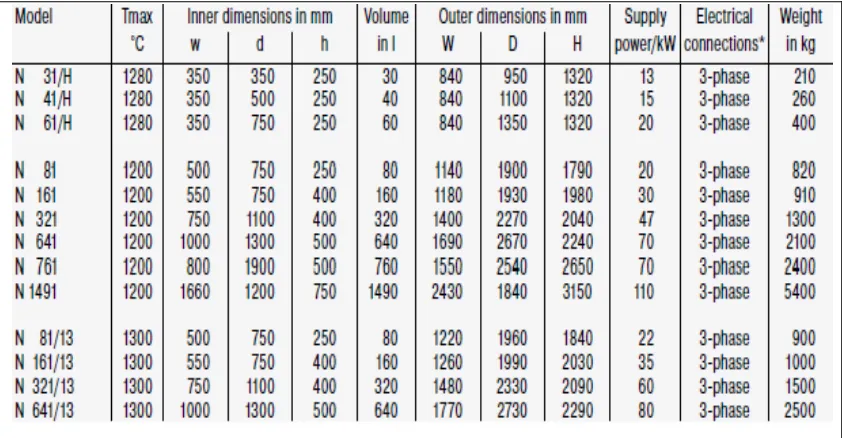i
DECLARATION
I hereby declare that this report entitled
“The Influence of Aging Time to Mechanical Properties on Aluminum Silicon” is the result of my own research except as cited in the references.
Signature :
Author’s Name : Connie Bato
ii
APPROVAL
This report is submitted to the Faculty of Manufacturing Engineering of UTeM as a partial fulfillment of the requirements for the degree of Bachelor of Manufacturing Engineering (Manufacturing Process) with Honours. The members of the supervisory
committee are as follow:
Dr. Nur Izan Syahriah Bt. Hussein
iii
ABSTRACT
iv
ABSTRAK
v
ACKNOWLEDGEMENTS
vi List of Abbreviation, Symbols, Specialized Nomenclature x
1. INTRODUCTION 1
2.1 Fundamental Princple of Heat treatment 4 2.2 Reviewed on Machine and Material 6
2.2.6 Commercially Pure Aluminum 15
2.2.7 Silicon 16
2.2.8 Aluminum and its alloy 16 2.2.9 Piston Alloy in Automotive Application 20
(Aluminum Silicon alloy)
vii
2.3 The benefit of heat treatment on AlSi-X alloy 26 2.4 Process Parameters 28
2.4.1 Aging Time 28
2.4.2 Silicon Percentage 29
2.5 Past studies 30
3. PEOCEDURES/METHODOLOGY 34
3.1 Introduction into Methodology of an Experiment 34 3.2 Experimental Plan 36 3.2.1 Define objective 36 3.2.2 Identity design factors and parameters 37 3.2.3 Identify response parameters 37 3.2.4 Preparation of experiment 39 3.2.5 Performing experiment with actual run 41 3.2.6 Analyze and interpret results from experiment run 42
4. RESULTS AND DISCUSSIONS 43
4.1 Characterization of aluminum silicon 43 4.2 Microhardness Result 44 4.3 Tensile properties of the AlSi following het treatment 48 4.4 Microstructure properties of the following heat 49 treatment of Aluminum Silicon
viii
LIST OF TABLE
NO.
TITLE
PAGE
2.1 Technical specification of Nabertherm 8 N 31/H-N 1491 range of furnace
2.2 Specifications of Rockwell Hardness Test 11 Machine
2.3 Comparison of mechanical properties of 15 commercial and high purity aluminum
2.4 Properties of aluminum alloy 17 2.5 Nominal composition of selected commercial- 18
silicon recommended for wear application
2.6 6000 series of aluminum alloy in automotive 22 application
2.7 Composition, mechanical properties, and typical 27 applications for several common aluminum alloys
3.1 Fixed variables used for the experiment 37 3.2 Response variables for the experiment 37
4.1 Hardness result of 0 hours heat treatment 44 4.2 Hardness result of 2 hours heat treatment 44 4.3 Hardness result of 4 hours heat treatment 45 4.4 Hardness result of 6 hours heat treatment 45 4.5 Hardness result of 8 hours heat treatment 45 4.6 Average hardness result of heat treatment 46 4.7 Result of Young’s modulus, result and yield 48
ix
LIST OF FIGURES
NO.
TITLE
PAGE
2.1 Heat treatment furnace 7 2.2 Indenters of Rockwell testing 10 2.3 Mitutoyo Digital Hardness Machine 10 2.4 Standard tensile test specimen 12 2.5 Shimadzu Universal Testing Machine 13
(The Autograph AG-I)
2.6 Optical Microscope 14 2.7 Aluminum alloys tree 19 2.8 Chasis material usage 21 2.9 Aluminum silicon binary phase diagram 23 2.10 Pseudo-binary phase diagram for AlMg2Si 25 2.11 Schematic aging curve at a particular temperature 29
for a precipitation-hardenable alloy
3.1 Project flow chart of designing an experiment 35 3.2 AlSi phase diagram and cast microstructure of pure 39
compounds and of various composition silicon
3.3 The melting of AlSi 41
4.1 Area within the grain of raw material, AlSi 43 4.2 Graph of hardness specimens along the heat 46
treatment activity
x
%RA Percentage of reduction area
G.L. Standard gauge length (50mm or 2’) HRB Rockwell hardness number
I0 Original length If Final length Mf Modulus of feeder Mc Modulus of casting
N Newton (measurement unit for force) rpm Revolution per minute
SEM Scanning electron microscope UTS Ultimate tensile stress (unit N/mm2) %wt Percentage of weight
1
CHAPTER 1
INTRODUCTION
1.1 Background Of Study
Daily life necessities such as cloth, food, properties, transportation, communication, and recreation are highly influenced most by various materials and the way they are created. Development of materials is more probably more deep-seated and grip to our heart and culture than most of us know. The expansion and advancement of societies have been intimately tied to the members’ ability to produce and manipulate materials to fill our needs. The earliest generation had access to a number of natural resource (stone, wood, clay, skins). With time changes, mankind discovered techniques for improving and producing materials that have demanding properties.
Furthermore, it was found that the properties of a material could be altered by heat treatments and by the addition of other substances. Here, material utilizations were totally a selection process. Knowledge, wisdom and understanding that we have gained, has empowered us to fashion and enlarge the characteristics of materials. The development of advanced technologies make our existence so comfortable and easy accessibility of suitable materials. As for example, automobiles would not have been even possible without the availability of inexpensive steel or some other comparable substitutes.
2
Heat treatment modifies microstructures that found in a material, and thereby, will encourage tested material to produce a variety of mechanical properties that are important in manufacturing such as improving formability and machinability.
By doing this, it will also enhance the service performance of the metals when used in machine or electrical components and also in tools, dies, and molds. For example, pure aluminum is too soft for most structural applications and therefore is usually alloyed with several elements to improve its corrosion resistance, inhibit grain growth and of course to increase the strength. The optimum strengthening of aluminum is achieved by alloying and heat treatments that promote the formation of small and hard precipitates which interfere with the motion of dislocations. Heat treatment is a method used to alter the physical, and sometimes chemical, properties of a material (Elwin, 2004).
In this project, AlSi alloy has been selected to be studied. Its affect to the heat treatment condition in the production of automotive piston due to its special properties used, which is the great influence on the wear properties of the alloy as it reduced the wear rate of the specimens, exceptional high tensile strength and hardness as well as a decrease in ductility.
1.2 Problem Statement
Principle describing heat treatment requires knowledge of the interaction mechanisms. These properties are often unknown at the elevated temperatures resulting from the heating. Therefore, a model describing the heating process has not yet been fully established. Various factors must be considered and evaluated. These factors include the percentage of silicon that desired to test on the AlSi specimen, hardness or yield strength that material can withhold for certain load, and the aging time that designed to be tested on specimens, the work piece thickness and thermal properties.
3
affect the heating subject quality have seriously hindered the growth of furnace heating applications in machining. Therefore, a systematic study to establish and recognize the machining standards to produce smooth outcome with good quality is necessary. There are various research objectives that have been performed by researchers in the past. One of them is the repeatability of furnace heating element due to the period of time that has been designed for that particular of material. The fact shows that it is often difficult to produce repeatable process. This makes the process of fabricating heating product with desired geometry to the industrial tolerances difficult to achieve.
1.3 Objectives and Aims of Study
The overall aim of this study is to understand the influence of aging time to the mechanical properties of AlSi alloy.
Specific objectives of this study are:
To observed the aging time on the AlSi alloy.
To experiment the heat treatment process to the strength of the aluminium alloy.
To study the hardness and microstructure of the aluminum alloy after undergone heat treatment activity.
1.4 Scope of Study
As stated above, the main objective of this research project is to observe the effect of heat treatment on the properties of Aluminum piston alloy.
In order to achieve this, the following experiments were carried out in the present study:
Study the properties of automotive parts that used aluminum alloy.
4
Application of heat-treatment on these alloys
Study the microstructure characterization of heat treated aluminum alloy using optical microscope with image analyzer.
5
CHAPTER 2
LITERATURE REVIEW
2.1 Fundamental Principle of Heat Treatment
Heat is defined as energy in the process of being transferred from one object to another because of the temperature difference between them, while, treatment in common, is a way of particular element behaving towards or dealing with thing or an element in the universe. The properties of alloying that decided to be used in heat treatment are related to its structural combination. The desired intensity of physical and mechanical properties can be obtained by differentiate and grouping the size, shape and distribution of its diverse constituents.
The activity of differentiating element can only be achieved in practice by the process of heat treatment. Generally, the structural bonding of any steel consist of transformed any particular product starting from austenite into another different stages, depending whether the alloy used is of hypoeutectoid, eutectoid or hypereutectoid type. Formation of alloying element in this type (hypoeutectoid, eutectoid or hypereutectoid) of process are differs from each others at a particular temperature.
Changing an alloy phases is depending on various parameters that desired to be undergone by a researcher. The presence of microconstituents stages mentioned earlier, together with the morphology of particular product contents is a significance way of deciding the resultant and discussion of its properties.
6
its subsequent transformation behaviour. Besides, object that undergone heat treatment process can be successfully held depends on its proper choice of heat treating furnace and the type of atmosphere maintained in the furnace used.
One can achieve an effective result and reproducible properties when heat treatment cycles factors, for example, the rate of heating, cooling and uniform temperatures range are ensured according to the requirements given. In general, an object to be heat treated is put into a heat treatment furnace at room temperature.
Then, the furnace will heat up to a predefine temperature. The heating rate depends on the size and shape of the object and the thermal conductivity of an alloy. The larger the size of the object, the lower shall be the rate of the heating. Heat treatment temperature is governed mainly by chemical composition of the alloy. Therefore, a thorough understanding heat treatment of an object is very important for one to start undergo the experimental process because the area of application for any metal or alloy is limited by its own properties.
2.2 Reviewed on Machine and Material
2.2.1 Heat Treatment Furnace
Uniformity of temperature and precise control of temperature time cycles are important in heat treatment activity. Good furnace equipment used for heat treatment process is a must. This is because experimental wise, heat treating activity consume great amounts of energy, their insulation and efficiency are important in design considerations. Heat treatment furnace is classified into three types of furnace, which is as batch, semi-continuous, and continuous.
7
However, the process of heating happened to be continuously. For semi-continuous furnaces, it happened to be similar with continuous furnaces but in a stepwise manner.
For the purposes of discussion, batch furnace is to be considered for experimental usage. The N 31/H - N 1491 batch heat treatment furnace model as shown in Figure 2.1 and Table 2.1 used, whereby manufacture by Nabertherm, is a furnace integrate the best of traditional and modern materials to produce an outstanding product quality combination in terms of performance and reliability.
Figure 2.1: Heat treatment furnace
(Source: Engineering Mechanical Laboratory UTeM)
8
Some instrument panel of the furnace is removable for the ease of servicing. This is also for an easy access to the element modules and thermocouple through the rear of the ease.
Table 2.1: Technical specification of Nabertherm N 31/H - N 1491 range of furnace (Source: Nabertherm manual)
2.2.2 Mitutoyo Digital Hardness Machine
Hardness is a measure of resistance of a material to deformation when an external force or load is applied to the material. Different hardness test use different methods of applying force and quantifying the resistance to deformation. Hardness is closely correlated to other mechanical characteristics. It is, like many other mechanical characteristics, a relative value that has no fundamental quantity or absolute standard and is different from physical quantities such as length, time, and force. Because of this, hardness values are determined using a standard testing machine under standard conditions.
9
The frictional resistance divided in two equally important parts: the chemical affinity of materials in contact, and the hardness itself. The hardness of metal is measured by forcing an indenter into its surface. The indenter, which is usually a sphere (ball), pyramid or cone is made of a material much harder than the material being tested. For example: hardened steel, tungsten carbide and diamond.
Hardness tests are performed more frequently than any other mechanical test for several reasons. They are simply and inexpensive ordinarily no special sample need be prepared and also testing machine is relatively inexpensive. The test is non-destructive which mean the sample is only deformed with a small indentation and can be used to another test. For this experimental study, the Rockwell and Rockwell superficial hardness (HRB) test machine as shown in Figure 2.3 will be performed on the heat treating specimens. The specification of the machine is shown as in Table 2.3.
Most hardness tests determine hardness from the area of the indentation made in a specimen by the indenter under a known load. In the Rockwell hardness and the Rockwell superficial hardness tests, a conical diamond indenter with a 120° angle and a radius of curvature of 0.2mm, or a steel or carbide ball indenter is pressed into the specimen. First, a preliminary test force is applied, then a total test force is applied, and then the test load is reduced to the preliminary test force.
10
The Rockwell tests constitute the most common method used in industry because they are so simple to perform and require no special skill. Indenters include sphere and hardened as in Figure 2.2 is used for the soft materials.
Figure 2.2: Indenters of Rockwell testing (Smith W. F., 2004)
The rockwell hardness number (RHB) is determined by the difference in depth of initial and final penetration load. Initial penetration is obtained from minor load, e. The value is 10 kg. Final penetration is obtained from major load, E. The value is depending on the scale / type of rockwell indenters. Formula is
RHB = E – e...(2.1)
11
Table 2.2: Specifications of Rockwell Hardness Test Machine (Source: Engineering Manufacturing Laboratory UTeM)
2.2.3 Shimadzu Universal Testing Machine (The Autograph AG-I)
Tensile tests measure the force required to break a specimen and the extent to which the specimen stretches or elongates to that point. Tensile tests produce a stress-strain diagram, which is used to determine tensile modulus. The data is often used to specify a material, to design parts to application force and as a quality control check materials. In this test, a sample is held rigidly between a fixed beam and a moving beam (the crosshead) as shown in Figure 2.4.
12
Figure 2.4: Standard tensile test specimen (Source: Heat treatment of wrought aluminum alloys, ASTM International, 1993 and Britt, 2002)
This machine is totally designed to carry out continuous testing on the yield strength production of a material. It was enhanced with efficiency by combining the testing machine part with a personal computer. The Autograph AG-I as show in Figure 2.5 is capable of satisfying its user needs by offering an effective controller with a high level of operability and safety as well. This machine also was linked to the software with the test machine on many dimensions desired.



